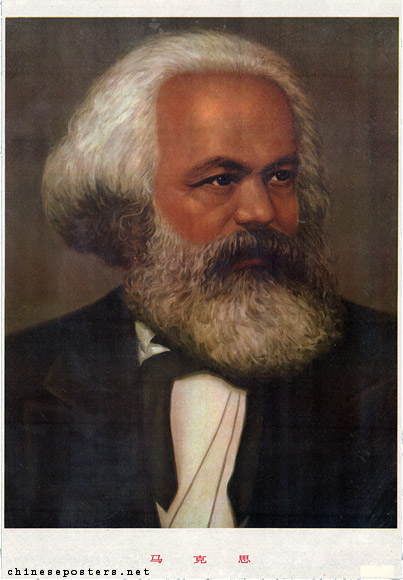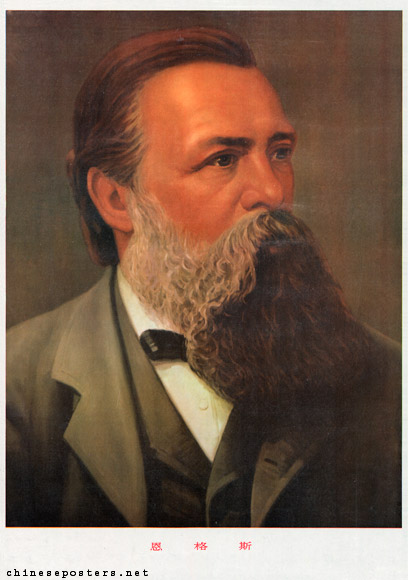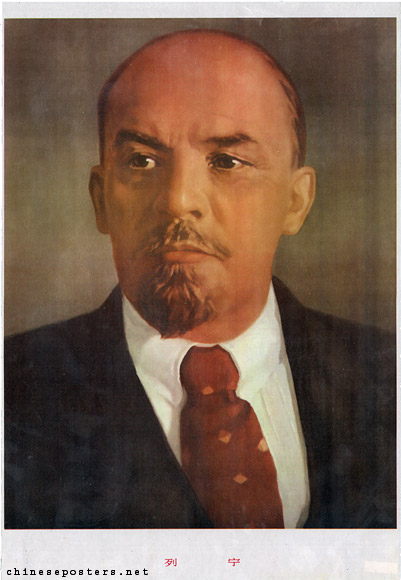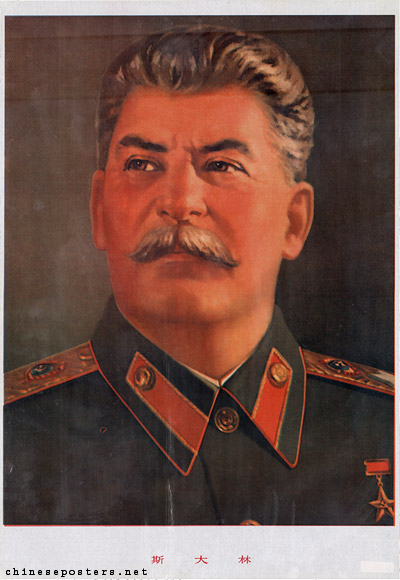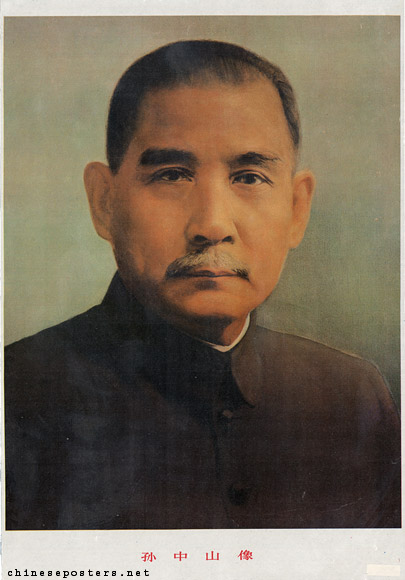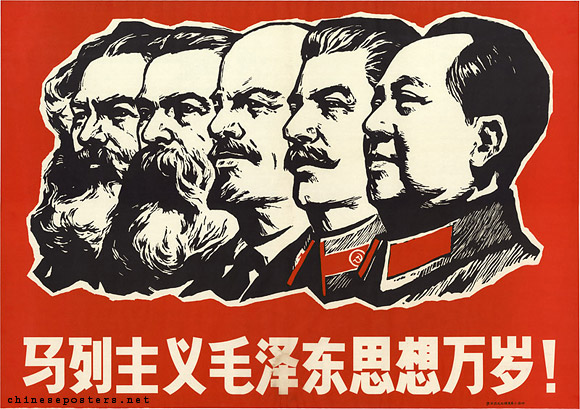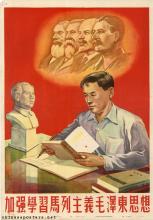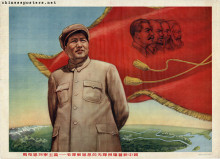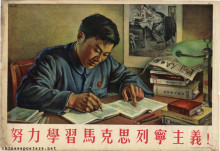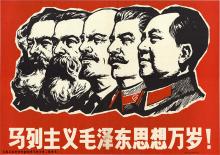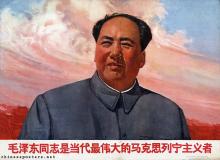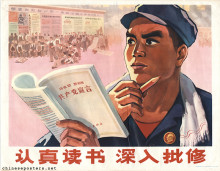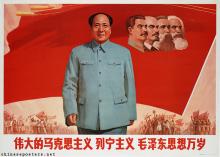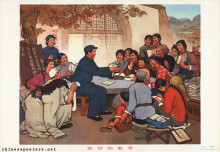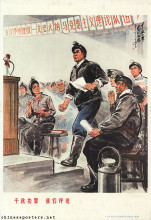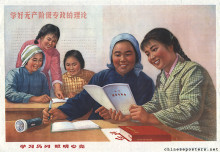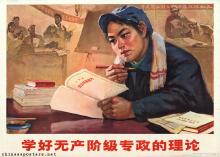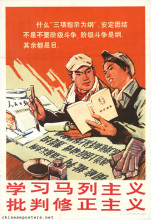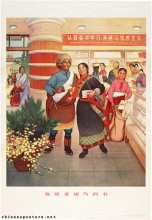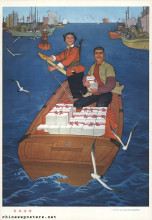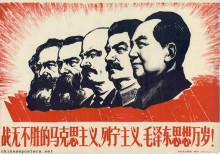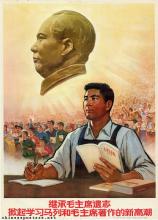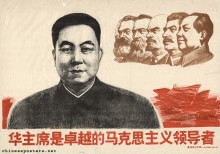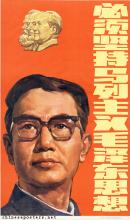Since the inception of the Chinese Communist Party, Marxism (and later Marxism-Leninism) has been the guiding ideology for all its actions. It is made up of the contributions of Karl Marx, Friedrich Engels, V.I. Lenin and Joseph Stalin. This theoretical framework has been enriched by Mao Zedong Thought, which is seen as the sinification of Marxism-Leninism by Mao Zedong. Since the late 1950s, China’s ideological foundation is made up of two elements: Marxism-Leninism as theory (pure ideology) and Mao Zedong Thought as "thought" (practical ideology). During the Cultural Revolution, Mao Zedong Thought was solely ascribed to Mao’s genius. According to Lin Biao, studying Marxism-Leninism consisted for 99% of studying Mao’s Thought. When Mao’s contributions were reassessed in the 1980s, it was interpreted as the collective wisdom of China’s veteran revolutionary leaders.
The portraits of the founding fathers of Marxism-Leninism have been displayed on Tiananmen Square on every occasion of national importance: Marx and Engels on the side of the Museum of the Chinese Revolution, Lenin and Stalin on the side of the Great Hall of the People, all facing Mao’s portrait affixed to the Forbidden City. The portrait of Sun Yatsen, the father of the Chinese Revolution, is usually placed in the middle.
Irreverent Chinese used to call these five portraits "The History of Shaving": from the bearded Marx and Engels to the goateed Lenin to the mustachioed Sun and Stalin, culminating in the hairless face of Mao.
The validity of the ideological framework was affirmed in the early 1980s, when Deng Xiaoping included Marxism-Leninism, Mao Zedong Thought in the Four Basic Principles, which in turn have been included in the Constitution. After Deng’s death in 1997, Jiang Zemin has been advocating the inclusion of "Deng Xiaoping Theory" in the canon. This has as yet not resulted in the addition of Deng’s portrait to the pantheon of Marxist theory.
At the same time, Jiang has been actively working on his own contribution to China’s ideological complex. In 2000, his theory of the "three represents" was first presented. The theory focusses on the future role of the CCP as "a faithful representative of the requirements in the development of advanced productive forces in China, the orientation of the advanced culture in China, and the fundamental interests of the broadest masses of the people in China." The "Represents" were adopted at the 16th Party Congress in November 2002 and written into the Party Constitution. In March 2003, the National People’s Congress decided to have them included in the State Constitution. In June 2003, the media started to promote a new campaign to study Jiang Theory with the call to "whip up a new high tide to study and implement the important thought of the ‘Three Represents’".
Long live Marxism-Leninism and Mao Zedong thought!, ca. 1968
Kwok-sing Li (editor) & Mary Lok (translator), A Glossary of Political Terms of the People’s Republic of China (Hong Kong: The Chinese University Press 1995)
Helmut Martin, Cult & Canon - The Origins and Development of State Maoism (Armonk, NY, etc.: M.E. Sharpe Inc., 1982)
Franz Schurmann, Ideology and Organization in Communist China (new, enlarged edition) (Berkeley, etc.: University of California Press 1968)
Ye Duchu et al. (eds), Dangyuan ganbu "sange daibiao" duben [The "three represents" reader for Party members and cadres] (Beijing: Hongqi chubanshe, 2000) [in Chinese]

